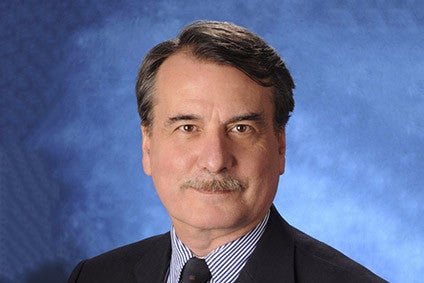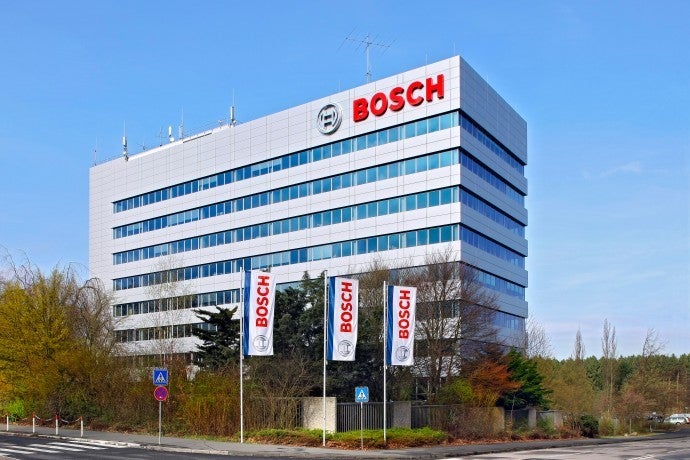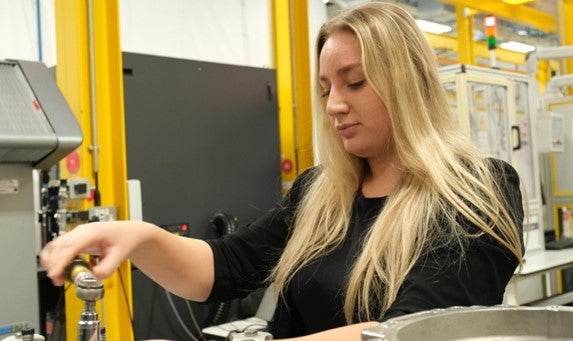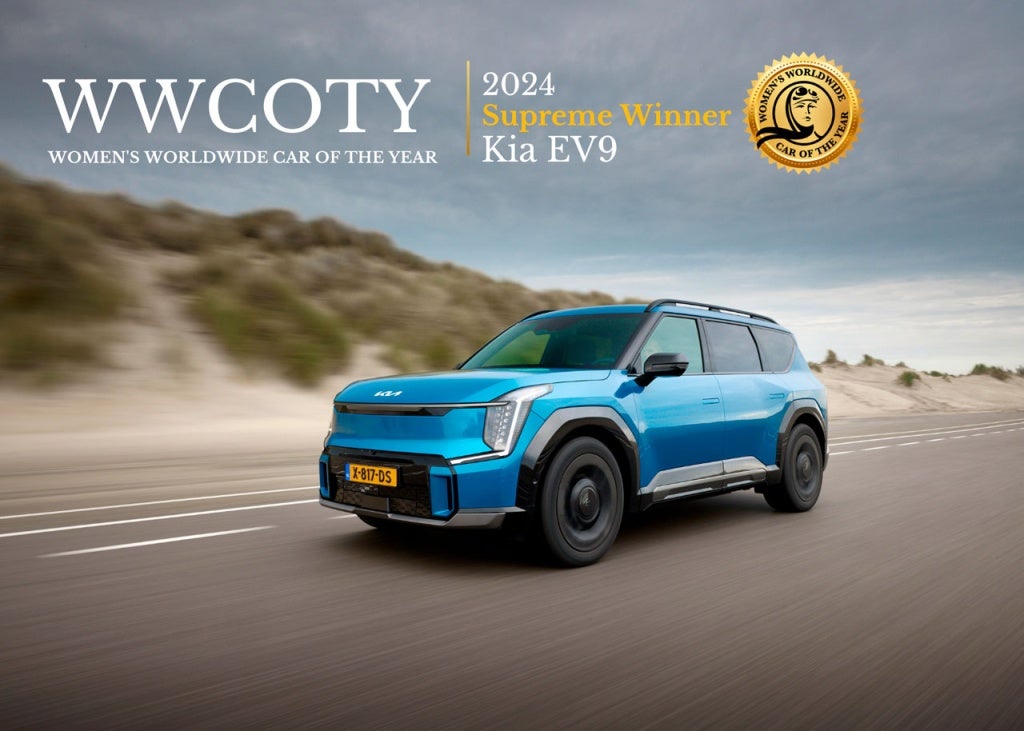
In a wide-ranging interview, as part of Federal Mogul Powertrain’s recent Technology Briefing days held in Augsburg, Germany, just-auto’s Calum MacRae interviewed the division’s Chief Technology Officer, Gian Maria Olivetti. Mr Olivetti has been with Federal Mogul since 2007. Before Federal Mogul he enjoyed stints at Fiat Powertrain Technologies and Iveco.
just-auto: For the commercial vehicle business what are the biggest issues you’re facing?
Gian Maria Olivetti: Fuel economy. The pressure has always been on fuel economy, but recently there’s been a compromise between fuel economy and emissions. Euro III, IV, Tier 3, Tier 4 or whatever all slowed down fuel economy improvements. The big emission steps are now finished. If you work with EPA10 in US, Euro 6 in Europe, etc. you have emission levels that are difficult to measure. The engine closely resembles a chemicals factory.
While these big steps are almost done (there will be evolutionary steps: in the cycle; real driving emission measurement, particulate measurement on board etc.) – but now the race is on to gain 2-3% improvements in fuel economy.
You see more and more energy recovery solutions. That’s happening already in stationary and will happen also with on-highway.
See Also:
Fuel economy does not mean just reducing friction; we have to look at combustion too. This means combustion that is more aggressive. This may mean using the Miller cycle or unconventional combustion approaches. So there are increasing mechanical and thermal challenges.
How well do you really know your competitors?
Access the most comprehensive Company Profiles on the market, powered by GlobalData. Save hours of research. Gain competitive edge.

Thank you!
Your download email will arrive shortly
Not ready to buy yet? Download a free sample
We are confident about the unique quality of our Company Profiles. However, we want you to make the most beneficial decision for your business, so we offer a free sample that you can download by submitting the below form
By GlobalDataComponents have to be low-friction and extremely reliable, because we have to forget about the engine. So many engine peripherals can fail that the engine has to be 100% reliable. You must have low friction, high strength, extremely high temperature-resistance, high corrosion-resistance – because temperature, corrosion and aggressive combustion they go together – components.
j-a: It seems there’s more scope for small changes in commercial vehicle fuel economy improvements than in light vehicles? Federal Moguls’s new EnviroKool steel piston for example delivers an up to 5% improvement when combined with waste heat recovery?
GMO: It’s much more important in commercial vehicles than in cars. In cars it’s an environmental concern in trucks it’s a financial consideration. In the future, there is a lot of potential for fuel economy and reduction. EnviroKool is a typical example. If you have a piston that is able to withstand much higher temperature, you can improve the combustion. In the commercial market there have been races for a 1.5% improvement. Fuel in a truck represents 30% of the operating cost and probably more as other costs like financial and maintenance are reducing. There have been incredible developments in materials – special steels – and coatings that allow much thinner piston rings for commercial vehicles – from 5mm to 2.5mm.
j-a: How much do you think alternative fuels will eat into the diesel share in the heavy duty sector?
GMO: We have to distinguish between CNG – still a fossil fuel – and others. CNG is the only real alternative fuel that we have on the market now. It is interesting from the CO2 footprint standpoint. On buses I can see it growing. For trucks maybe, but it’s 10 years that people have been talking and the quantity of fuel on the truck is always the barrier. For a bus you can refuel every day; in a truck you do not. In a long-haul truck in Europe you have two 500 litre fuel tanks, giving a 3,000km range. It allows the operator to choose best fuel prices at stops, or getting out of a country where fuel quality is not so good.
Other alternative fuel for heavy duty is a problem. Biodiesel is questionable from the sustainability point of view. Also, the quality is not exactly what we need for a modern and efficient engine. I don’t see biodiesel as growing penetration.
There are a lot of discussions around other fuel, like DME (dimethyl ether) and LME. LME is a little bit like biodiesel, it’s renewable but economically it’s questionable.
j-a: How much impact do regional and global differences in fuel quality have on the engineering choices you make?
GMO: There is still a difference, mainly related to the sulphur content, but it’s a bit more harmonised. You can find 10 PPM everywhere. In Eastern Europe, it’s still a little bit an issue. In China, it’s improving, but it’s still different.
The main issue we have now is the quality of the lubricant. The new generation of engines are going in the direction of very sophisticated low viscosity oils. We are talking about 5W30 to 0W20 and 0W10 and beyond to reduce the friction. That means that you have to put wear improver additives in the oil. Also, you have to have low ash oils that are compliant with aftertreatments.
Oil is becoming sophisticated, and to have sophisticated oil around the world is becoming much more difficult than having good fuel. Availability of quality oil is crucial for reliability.
j-a: How much impact will reduction in the use of internal combustion engines have on your business?
GMO: For commercial vehicles we see an electrification trend for auxiliary and onboard 48V if they want. It’s simple as it does not affect the engine’s main purpose of propelling the vehicle.
For light vehicles, it is a little bit different. Full electric vehicles and plug-ins certainly will come but every single year I see the forecast and it’s moved out. There are still significant technical barriers. Mainly in the battery, but not just in the battery. In the next 20 years, probably 85 – 95% of light vehicles will still have a combustion engine, albeit a very efficient one to make hybridisation rational.
Hybridisation in the past was seen as a sort of transition phase before pure electric. Now, it appears to be an intelligent approach to sustainability. Asia and North America will be the strongest regions but Europe will be a little less.
j-a: What about 48V mild hybrids?
GMO: 48V is very interesting for electrification of auxiliary. It’s not very interesting for hybrid, because when you go to a mild or full hybrid, it’s not 48V. It’s 200 or 300 volts.
But 48V is a strange story, because according to forecasts of 10 years ago we should have 48V everywhere. Now we start again to speak about 48V, because there are very interesting solutions that allow dual voltage – 12 and 48V – at reasonable cost. In Europe, more and more OEMs are thinking about and developing for 48V. I’m convinced that the 48-volt in Europe will come.
j-a: You’re saying we shouldn’t call it 48V mild hybrid, but it’s more of an advance start-stop with coasting functions…
GMO: The definition of hybrid is so wide. Start-stop is a microhybrid. Then, advanced start-stop is mild hybrid. When you have a 10kW machine that can also recuperate energy – is that mild? I don’t know. There is a category that is micro that is the start-stop of today and is a EUR100 cost. Then, there is a category with advanced start-stop, advanced electrification of auxiliary, can be 12 volt and so on; that is a sort of hybridisation, because they have coasting capability etc. The category between micro-and mild-hybrid is interesting, because then you come directly to full hybrids, the parallel hybrid, the serial hybrid etc. which are all still relatively expensive.
For us, it’s very interesting, because an engine that is in a hybrid car has a different duty cycle, and you need to have different components, because the lubrication is different.
j-a: Hybridisation brings more value to the engine cylinder for Federal Mogul?
GMO: Yes, when you have stronger stop-start activity, you can have problems with lubrication; wear in the bearings, you have problems with the rings and with corrosion, because temperatures are completely different. We have specific solutions for these issues.
j-a: Does that compensate for a lot more 3-cylinder engines coming to the fore?
GMO: That’s difficult. The trend in reduction of cylinder numbers is already here. I don’t think it will continue. It’s difficult to imagine a certain level of power with fewer than three cylinders. These 1.5-litre diesel 3-cylinders are at the end of the downsizing. Gasoline’s a little different, we have 1-litre three- and four-cylinder. But, over this point, we will never go.
There’s also a real driving cycle (RDE) concern and this is not positive for further downsizing because, in RDE, we see that extreme downsized engines – both gasoline and diesel – will have a problem as they are in conflict with the requirements of the RDE. They run a really high load, so their fuel economy will not be the best, so for those reasons I do not see any more downsizing. That doesn’t mean there won’t be more reduction in V8s etc, but at the extremes of downsizing we have reached the end.
j-a: Waste heat recovery is quite important in commercial vehicles, and easier to achieve/package in commercial vehicles. Do you see any waste heat recovery trickling down into light vehicles? There’s been talk about thermoelectric generators in light vehicles for some time…
GMO: As a general trend, I have to say, it is interesting, and I was developing the technology when I was in the business of commercial engines. There are technical concerns. First, the cost. In a commercial vehicle, if you want a 3-4% advantage you have to go to a full organic Rankine cycle system. It’s very complicated because it is an additional system, because you have the operator, you have the condenser, you have the piston system or battery system, and then you have to recover the power.
You can recover electrically, then you have to put in a battery and then again add cost. You can recover mechanically…but it’s not easy to recover power from the expander to the crankshaft. You can use the power to operate auxiliaries, but their power requirements vary all the time. The energy recovery system may be working at the maximum efficiency all the time, but your auxiliaries may not need the power. It is very complicated but everyone is working on it.
At the moment they’re giving less advantage than was calculated but I see continuous refinement. But full Rankine cycle will be expensive.






